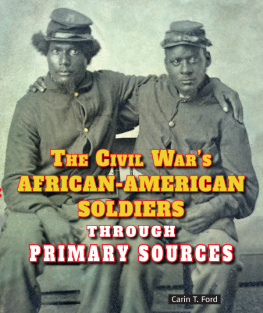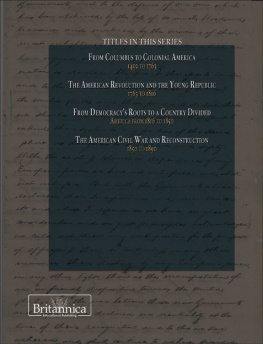Julie L. Holcomb is the author of Moral Commerce: Quakers and the Transatlantic Boycott of the Slave Labor Economy (Cornell University Press, 2016) and the editor of Southern Sons, Northern Soldiers: The Civil War Letters of the Remley Brothers, 22nd Iowa Infantry (Northern Illinois University Press, 2004). In addition to her books, Holcomb has published widely in a variety of academic and popular venues. Within the field of Civil War history, she has published entries in several reference works published by ABC-CLIO, including Civil War: Perspectives in American Social History, Encyclopedia of the Material Culture of Slave Life, and Women in the American Civil War. Holcomb has published essays for the online publications Essential Civil War Curriculum and The Ultimate History Project and had an essay published in The Fate of Texas: The Civil War and the Lone Star State (University of Arkansas, 2008). Holcomb serves as the editor of Quaker History, the peer-reviewed journal published by the Religious Society of Friends.
Holcomb is associate professor in museum studies at Baylor University in Waco, Texas, where she teaches courses in collections management, archival management, ethics, and preventive conservation. Prior to her appointment at Baylor, Holcomb was the director of the Pearce Civil War and Western Art Museums in Corsicana, Texas. In that position, she worked with the donors, Charles and Peggy Pearce, to increase the size and scope of the collection in preparation for the 2004 opening of the Pearce Collections Museum. During her eight-year tenure with the Pearce Collections, Holcomb increased the size of the Civil War collection from three thousand to seventeen thousand objects, manuscripts, and other materials and expanded the scope of the collection to include the antebellum and Reconstruction eras and the home front all the while maintaining the original emphasis on Northern and Southern military history. As director of the Pearce Museum, Holcomb supervised all aspects of the museum and archives, including acquisitions, public programming, exhibit development, marketing and outreach, research services, and the volunteer and internship programs.
Holcomb received her bachelor of arts in history and creative writing from Pacific University, Forest Grove, Oregon (1999); her master of library and information science, with a specialization in archives and records management, from the University of Texas at Austin (2000); and her PhD in transatlantic history from the University of Texas at Arlington (2010).
G rowing up in Oregon, the history of the American West rather than the history of the Civil War figured prominently in my coursework and my reading in high school and as a young adult. In my thirties, as a nontraditional undergraduate student at Pacific University, I took my first Civil War history course. Taught by Larry Lipin, the course challenged my assumptions and encouraged me to think more critically about the Civil War and its significance. Later, as a graduate student at the University of Texas at Arlington, I took Stephen Maizlishs Civil War historiography course. The reading load was brutal, especially for someone who held a full-time job in addition to being a part-time graduate student. Still, that course and the books we read remain among my favorites from my doctoral program, perhaps because it was so closely related to my work with the Pearce Civil War and Western Art Museum.
For nearly eight years, I worked at the Pearce Museum, located on the campus of Navarro College in Corsicana, Texas. Serving first as the college and special collections archivist and then as director of the museum, I had an unusual position. During my years at the Pearce Museum, my day generally began with a meeting over coffee with the Pearces. Usually it was Charles, but at times his wife Peggy would join the group. The Pearces interest in the Civil War era began a decade before I arrived at Navarro. Peggy had read The Killer Angels, Michael Shaaras novel about the Battle of Gettysburg, and become infatuated with Union officer Joshua Lawrence Chamberlain. Sometime after this Chuck bought Peggy a letter written by Chamberlain to his wife Fanny from the Battle of Antietam. For several years, Chuck and Peggy built a small but impressive collection of Civil War documents. In the late 1990s, the Pearces gave their collection to Navarro College. By the time I was hired, the collection had grown to three thousand documents and plans were being developed to construct a museum to exhibit the Civil War collection as well as the Pearces collection of contemporary Western art. At our morning meetings, we reviewed catalogs and other offerings from auction houses and individual dealers, quickly building a collection that within eight years numbered nearly twenty thousand documents and artifacts.
I owe a debt of gratitude to Charles (19192008) and Peggy Pearce (19182005) and their children Vivian Pearce and Sumner Pearce as well as Darrell Beauchamp, who served as dean of learning resources and special collections at Navarro. The coffee group varied over the years. In addition to Charles, Peggy, and Darrell, the group included Mary Hayes, Amanda Morrison, and Rosalie Meier. Volunteers Holly Brickhouse and her daughter Lee Brickhouse Becher amazed (and continue to amaze) me with their incredible knowledge of the Civil War.
I extend my appreciation to several individuals who helped me identify objects to include in this book. Susannah Ural graciously shared her knowledge of Hoods Texas Brigade and the James Rodgers Loughridge Papers, which are part of the Pearce Civil War Collection. My thanks also to John Versluis, Texas Heritage Museum; Paul Fisher and Benna Vaughan, Texas Collection, Baylor University; Andrea Turner and Beth Farwell, Central Libraries, Baylor University; and Ann Zembala and Christina Lucas, Pearce Civil War Collection.
Curators, archivists, and collections managers at many institutions provided research assistance and photography services. Clayton Crenshaw, former music librarian, Baylor University; Shannon Simpson and Sylvia Smith, Ellis County Museum, Waxahachie, Texas; Michelle Metzger, Dallas Historical Society; Lisa Marine, Wisconsin Historical Society; Terre Heydari, Degolyer Library, Southern Methodist University; Doug Remley, National Museum of African American History and Culture; Patrick Walsh, Texas General Land Office; Meredith McDonough, Alabama Department of Archives and History; Katelyn Allen, Mount Holyoke College Art Museum; Elizabeth Borja and Kate Igoe, National Air and Space Museum; Carolyn Sautter, Gettysburg College; Graham Dozier, Virginia Museum of History and Culture; Dean Hargett, State Historical Society of Missouri; Jennifer Loredo, U.S. Army Heritage and Education Center; Dustin Klein, Southern Museum of Civil War and Locomotive History; and Andrea Hoffman, Department of Veterans Affairs, Wisconsin.
I am grateful to Thomas Breakey and Rutger Breakey. For the second time, they have supported my work by sharing their amazing collection of 24th Michigan materials. I met Andy Thomas while I worked at the Pearce Museum. I am thrilled to include one of his paintings in this book. Mary H. Farmer graciously agreed to let me use her photograph of Stone Mountain. I also extend thanks to my friend Loraine Schmitt for allowing me to use her image of the George Floyd mural in Portland, Oregon.
My appreciation goes out to my editor at Rowman & Littlefield, Charles Harmon, and to editorial assistant Erinn Slanina. I appreciate Charless guidance and his patience, especially as COVID-19 temporarily delayed my revision schedule. My thanks also go out to Aja Bain, at AASLH, for her guidance.
Portions of this book were written on Friday afternoons during sessions of Baylor Universitys Womens Faculty Writing Program (WFWP). Started by Baylor English professor Lisa Shaver in 2017, the WFWP brings together women associate professors from across the campus to work on their research and writing. By creating space and time for scholarship, the WFWP helps women work toward promotion to full professor. The program has grown from one group to three. Although group membership has changed over the past three years, I am especially grateful to Lisa Shaver, Beth Allison Barr, Julie deGraffenried, Andrea Turpin, and Lenore Wright. And a special thanks to Kimberly Kellison, who encouraged me to join the group.






